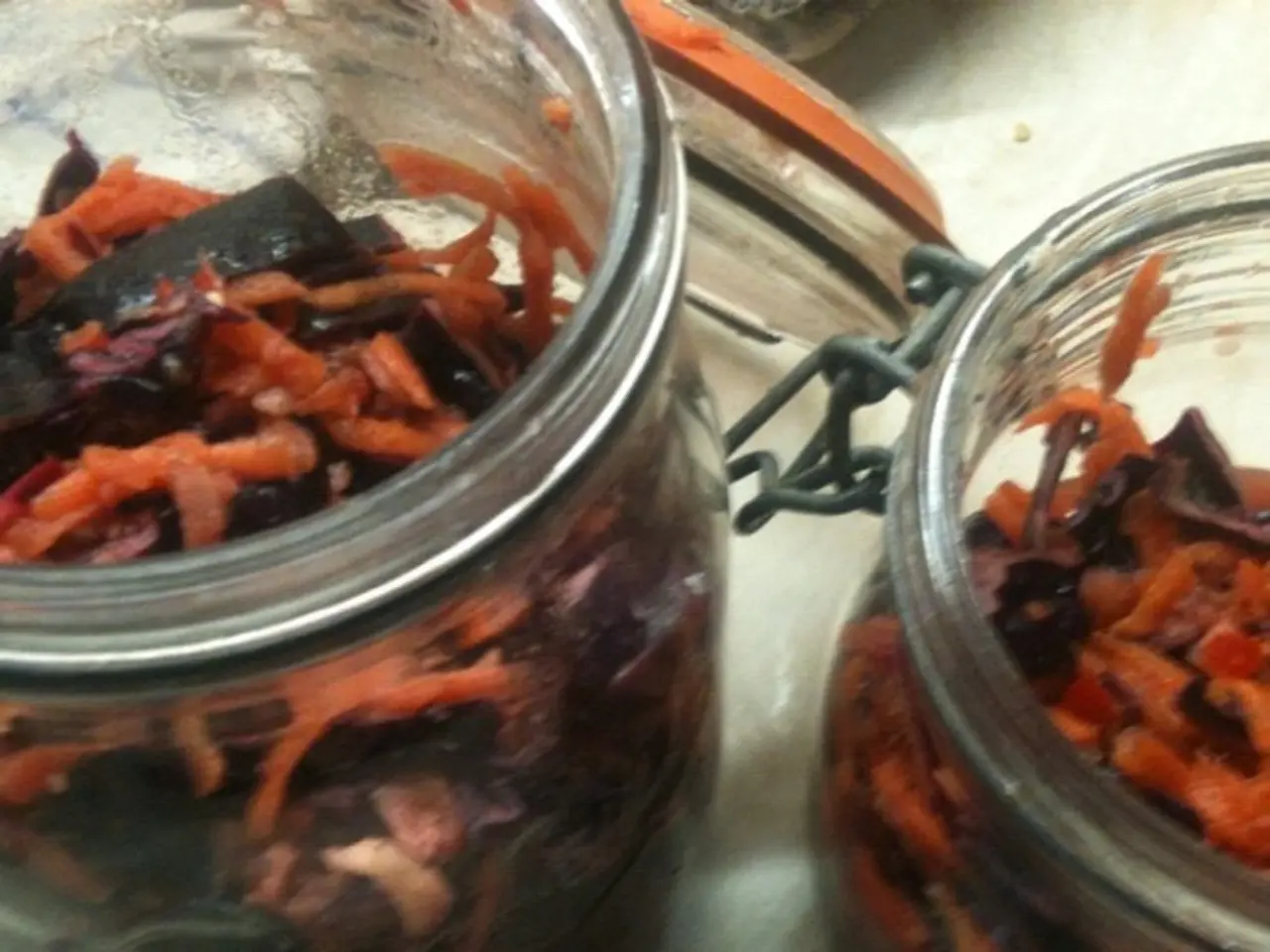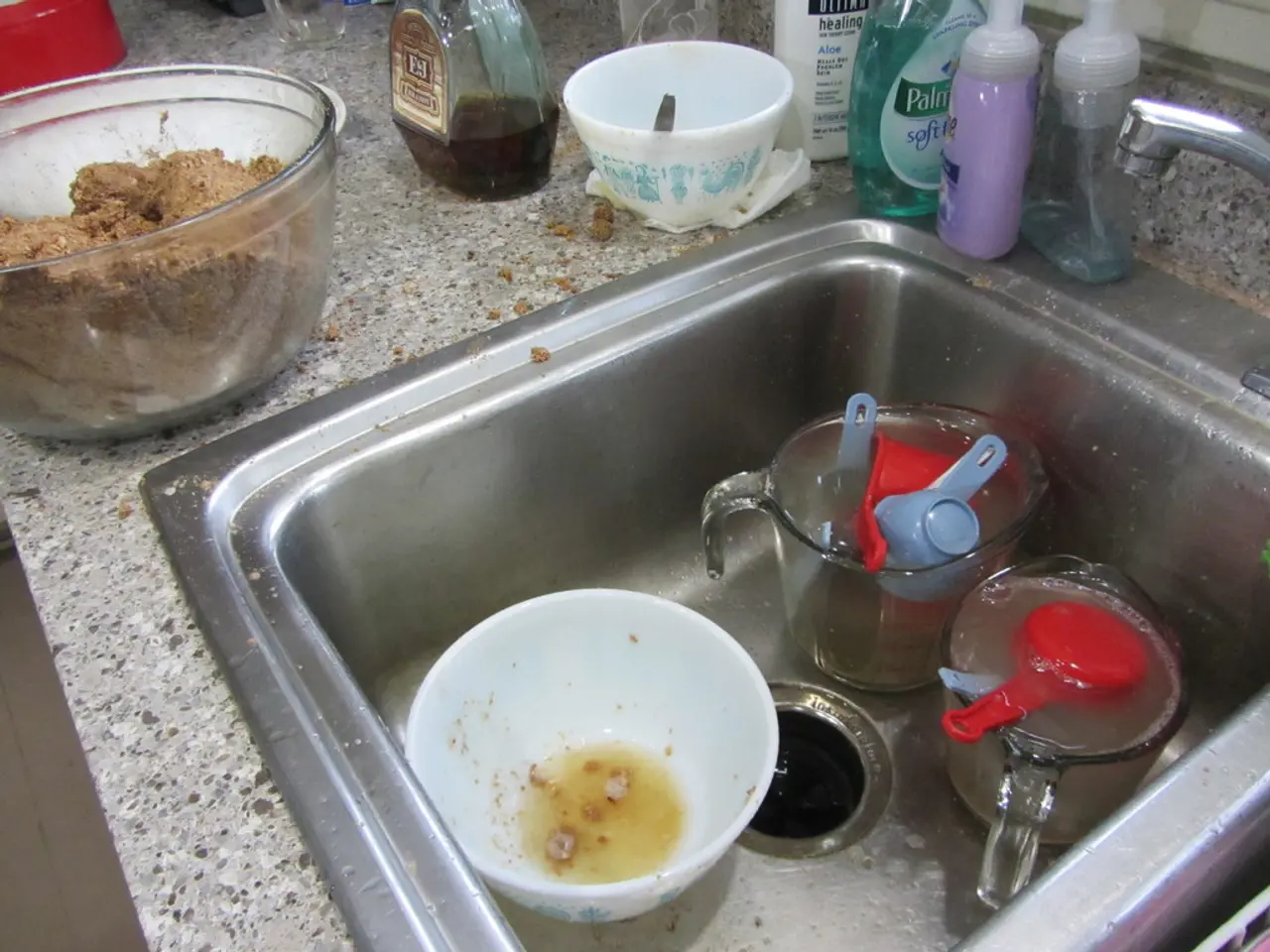Streamlined can sanitization: bypass pots and boiling for swift results - just 2 minutes required
As summer and fall approach, home preservation enthusiasts are gearing up for the peak season of canning, pickling, and jam-making. One key step in this process is sterilizing jars, a task that can be accomplished through various methods, each with its unique advantages and considerations.
**Effectiveness**
Microwave sterilization, boiling in a pot, and steam sterilization each have their merits. Microwave sterilization, for instance, generates heat rapidly, making it a quick and reliable option for small glass jars and certain baby feeding items. However, uneven heating can be a risk, potentially leaving some areas less exposed to high temperatures.
Boiling in a pot, on the other hand, is a proven, effective method for sterilizing glassware, widely recommended for its simplicity and reliability. Steam sterilizers, including electric and stovetop models, are highly effective, providing consistent coverage and temperature, making them preferred in many settings for sterilizing bottles and jars quickly and thoroughly.
**Safety**
When it comes to safety, microwave sterilization poses risks of uneven heating and breakage due to rapid temperature changes or microwave misuse. Proper precautions, such as using microwave-safe glassware, removing lids before heating, and following manufacturer instructions closely, can help mitigate these risks.
Boiling in a pot is safe when handled properly, but care is needed to avoid burns from hot water and steam. All glass jars must be fully submerged and regularly inspected for cracks or chips.
Steam sterilizers are generally safe, but similar cautions apply regarding burns and handling hot equipment. Steam sterilizers are designed to prevent scalding and contain steam effectively.
**Comparison Table**
| Method | Effectiveness | Key Safety Concerns | Best For | |-----------------------|----------------------|------------------------------------|-------------------------| | Microwave | Good (if done right) | Uneven heating, glass breakage | Small jars/bottles | | Boiling in a Pot | High | Burns, steam, glass breakage | All glass jars | | Steam Processing | Very High | Burns, steam, handling hot items | Multiple items quickly |
**Summary**
Microwave sterilization is effective if used with appropriate glassware and correct procedures, but poses risks of uneven heating and breakage. It is best for small-scale or quick sterilization needs. Boiling in a pot is simple, reliable, and safe with careful handling, making it widely recommended for home use and low-cost sterilization. Steam processing provides the most consistent sterilization and is preferred for larger loads or frequent use, offering both speed and safety with proper equipment.
All methods require adherence to safety guidelines and regular inspection of glassware to prevent accidents. For critical uses, such as infant feeding, steam or boiling methods are generally preferred over microwave sterilization due to their reliability and consistent results.
Proper jar preparation is crucial for the safety and quality of preserves. Glass jars are needed for microwave sterilization (metal lids aren't suitable), and jars should be thoroughly cleaned with detergent and hot water, paying special attention to the neck, bottom, and sides. The microwave method requires minimal effort as no pots or lids are needed, and it uses less electricity than a stove for sterilization.
In conclusion, whether you're a seasoned preservationist or a beginner, understanding the different methods of jar sterilization can help ensure the safety and quality of your preserves. Choose the method that best suits your needs and follow safety guidelines to enjoy your homemade preserves for months to come.
Fashion-and-beauty enthusiasts may find that steam sterilizers, which provide consistent coverage and temperature, are preferred for sterilizing beauty tools quickly and thoroughly, helping maintain a hygienic lifestyle. On the other hand, home-and-garden lovers using various glassware, such as jars and bottles, for canning and home preservation may find boiling in a pot to be a simple, reliable, and cost-effective method, recommended for its versatility and safety with careful handling.




